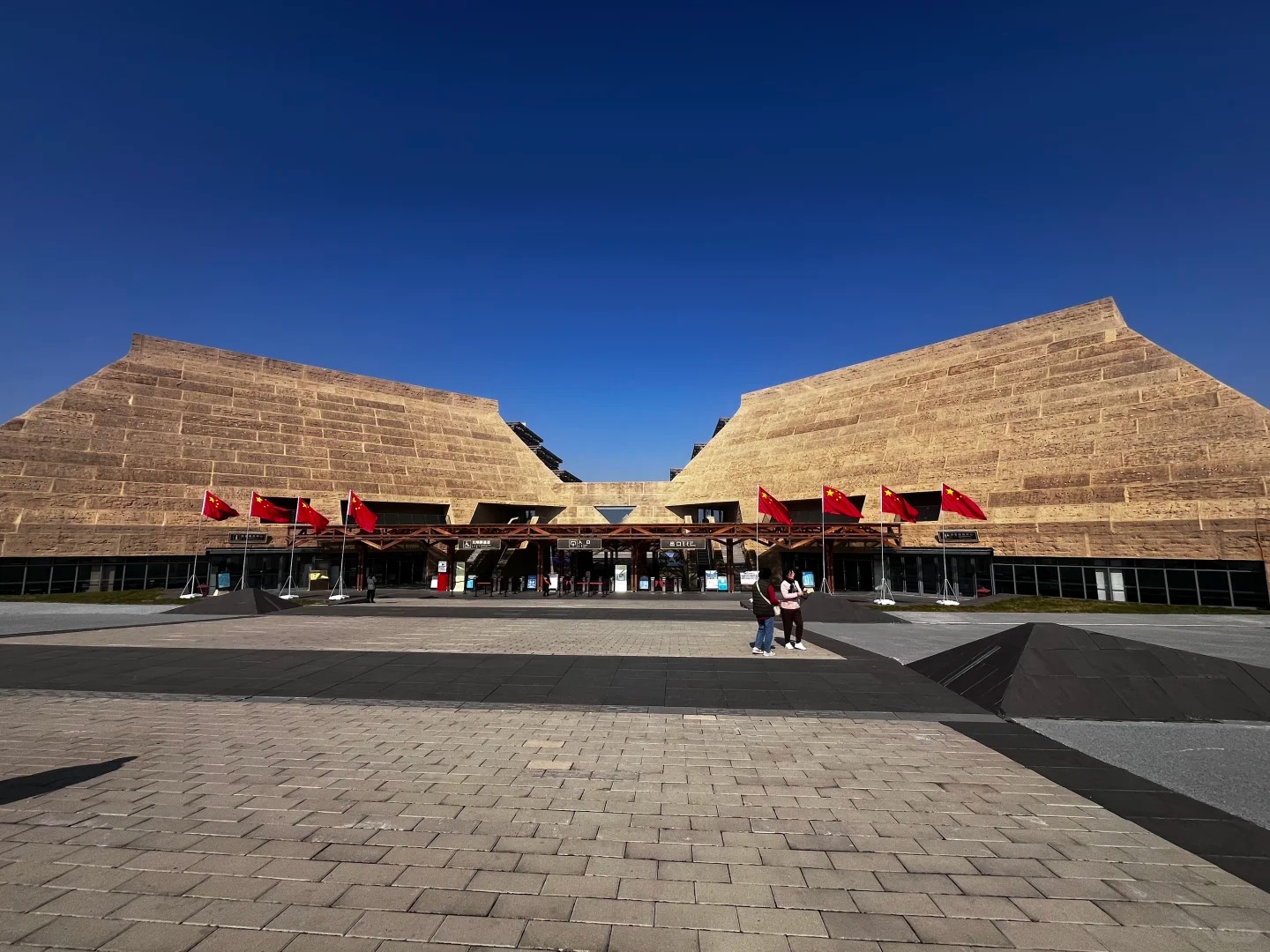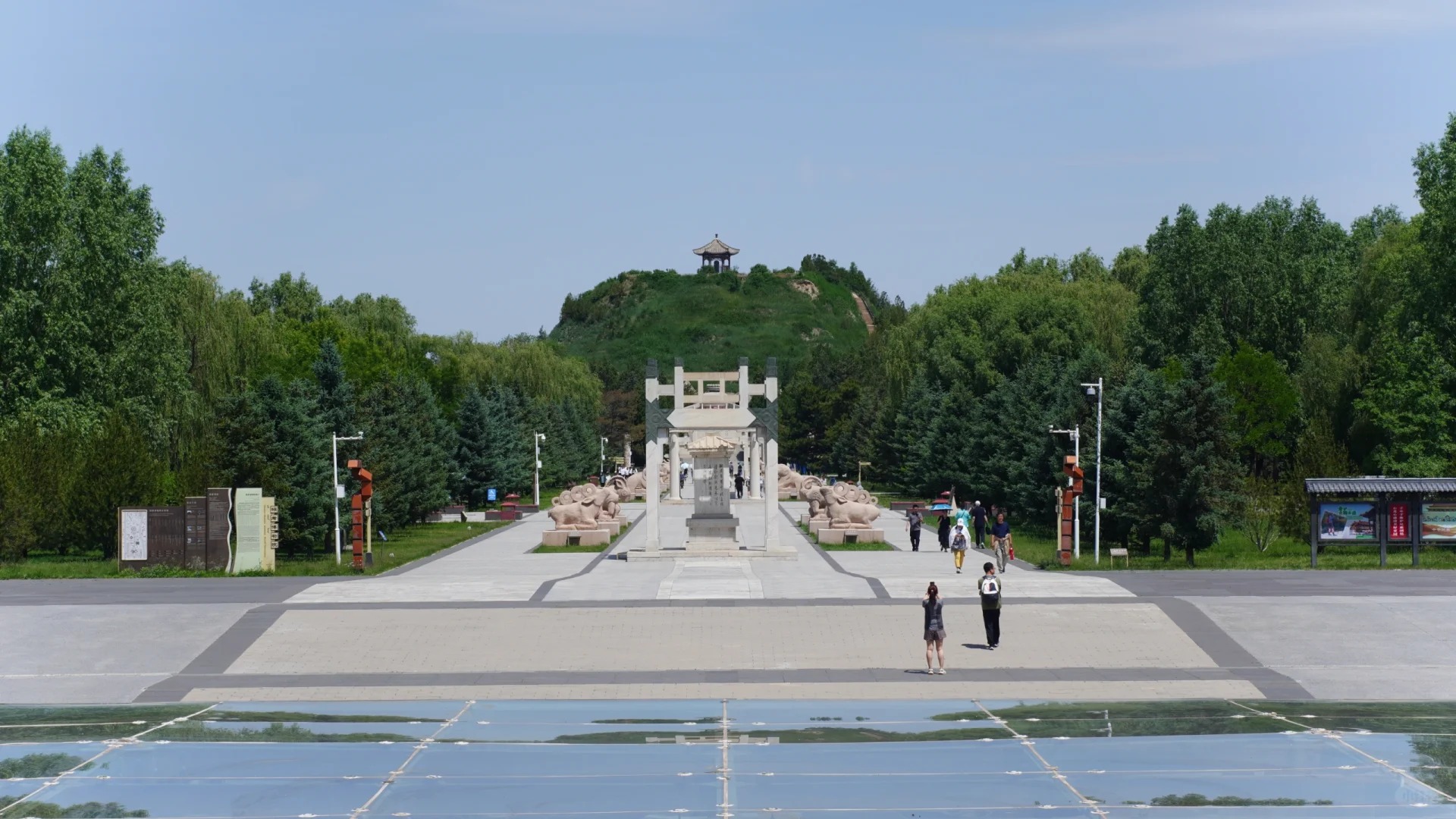Zhaojun Tomb
Historical Overview
The history of Zhaojun Tomb is deeply intertwined with the life of Wang Zhaojun, one of the Four Beauties of ancient China. In the Western Han Dynasty, Wang Zhaojun was sent as a tribute to the Xiongnu as part of a peace - making marriage alliance. Her selfless act contributed to the relatively stable relationship between the Han Dynasty and the Xiongnu for a period. The tomb was built to commemorate her and has since become a symbol of her bravery and sacrifice. Over the centuries, it has witnessed the rise and fall of dynasties and the changes in the political landscape of the region. In modern times, it has been well - protected and developed into a significant cultural tourist attraction, attracting visitors from all over the world to learn about this important chapter in Chinese history.
Architectural Layout
Zhaojun Tomb is surrounded by a large - scale architectural complex. The main tomb is a large earthen mound, which is the final resting place of Wang Zhaojun. It is surrounded by a series of auxiliary buildings and structures. At the entrance, there is a grand gate that welcomes visitors. Inside the complex, there are pavilions, halls, and corridors that are intricately designed and built in traditional Chinese architectural style. The layout follows the principles of feng shui, with a harmonious balance between the natural environment and the man - made structures. The buildings are often decorated with beautiful carvings and paintings that depict scenes from Wang Zhaojun's life and the historical events of the time.
Major Attractions
- The Main Tomb Mound: The most prominent feature of Zhaojun Tomb, the large earthen mound stands as a solemn reminder of Wang Zhaojun's legacy. Visitors can walk around the mound and take in its grandeur. There are also inscriptions and plaques around the mound that provide information about its history and significance.
- Zhaojun Memorial Hall: This hall is dedicated to showcasing the life story of Wang Zhaojun. Inside, there are life - size statues, historical documents, and artifacts related to her. The exhibits are arranged in a chronological order, allowing visitors to follow Wang Zhaojun's journey from her early life in the Han Dynasty to her time among the Xiongnu.
- Beauty Pavilion: Named after Wang Zhaojun's reputation as one of the Four Beauties, this pavilion offers a panoramic view of the surrounding area. It is a great place to relax and enjoy the natural scenery while reflecting on the historical significance of the site.
- Cultural Relics Exhibition Hall: Here, visitors can see a wide range of cultural relics unearthed from the vicinity of Zhaojun Tomb. These include pottery, bronze ware, and other artifacts that provide insights into the daily life and cultural practices of the people during the Han Dynasty and the Xiongnu period.
Suggested Itineraries
- Short Visit (1 - 2 hours):
Start at the main gate of Zhaojun Tomb complex. First, visit the Zhaojun Memorial Hall to learn about Wang Zhaojun's life story through the exhibits. Then, walk around the main tomb mound and read the inscriptions. Finally, stop by the Beauty Pavilion for a quick view of the surroundings.
Highlights: A quick overview of Wang Zhaojun's life and the main features of the tomb. - Medium - length Visit (3 - 4 hours):
Begin at the entrance and first explore the Cultural Relics Exhibition Hall to understand the historical context. Next, visit the Zhaojun Memorial Hall in detail, spending more time on the exhibits. After that, take a leisurely walk around the main tomb mound and visit the auxiliary buildings nearby. End the visit at the Beauty Pavilion for a relaxing break and a great view.
Highlights: A more in - depth exploration of the historical and cultural aspects of Zhaojun Tomb. - Full - day Visit (6 - 8 hours):
Start early in the morning. First, visit all the exhibition halls, including the Cultural Relics Exhibition Hall and the Zhaojun Memorial Hall, taking your time to study each exhibit. Then, have a picnic lunch in the park area near the tomb. In the afternoon, explore the less - visited corners of the complex, such as the small temples and gardens. Finally, end the day at the Beauty Pavilion to watch the sunset over the tomb.
Highlights: A comprehensive and immersive experience of Zhaojun Tomb, allowing you to fully appreciate its historical and cultural value.
Ticket Purchase
- Online: You can book tickets in advance through the official website of Zhaojun Tomb or popular online travel platforms. This allows you to skip the long queues at the ticket office, especially during peak tourist seasons.
- On - Site: Tickets are also available for purchase at the ticket office at the entrance of Zhaojun Tomb. However, during holidays and weekends, there may be long lines, so it is advisable to arrive early.
- Prices:
- Adults: ¥30 - ¥50 (prices may vary depending on the season and any special exhibitions).
- Students and Seniors: Usually enjoy a discount, typically around ¥15 - ¥25, with valid identification.
- Children under 1.2m: Free admission.
Transportation
- By Bus: There are several bus routes that stop near Zhaojun Tomb. You can check the local bus schedule and take a bus from the city center of Hohhot. The bus ride usually takes about 30 - 60 minutes, depending on the traffic conditions.
- By Taxi: Taking a taxi from the city center of Hohhot to Zhaojun Tomb is a convenient option. The journey takes approximately 20 - 40 minutes, depending on the distance and traffic. You can ask the taxi driver to drop you off at the main entrance of the tomb complex.
- By Self - driving: If you have a car, you can drive to Zhaojun Tomb. There is a parking lot near the entrance, providing ample space for vehicles. The self - driving route is well - marked, and you can use a GPS navigation system to reach the destination easily.
Best Time & Tips
- Peak Hours: Try to avoid visiting during the peak hours of 10 AM - 2 PM, as the site can get very crowded. It is better to arrive early in the morning when it opens or in the late afternoon.
- Crowds: Weekends and public holidays are the busiest times. If possible, plan your visit on a weekday to enjoy a more peaceful and relaxing experience.
- Weather: The best time to visit Zhaojun Tomb is during spring (April - May) and autumn (September - October). The weather is mild, and the surrounding scenery is beautiful. In summer, it can be hot, so make sure to bring sunscreen and drink plenty of water. In winter, the site may be covered in snow, creating a unique and picturesque view, but it can also be very cold, so dress warmly.
- Essentials:
- Wear comfortable walking shoes as you will be doing a lot of walking around the complex.
- Bring a hat and sunglasses to protect yourself from the sun.
- It is a good idea to bring some snacks and water, especially if you plan to spend a long time at the site. There are also some food and drink vendors inside the complex, but the prices may be slightly higher.
- Respect the cultural and historical significance of the site. Do not touch or damage the exhibits and follow the rules and regulations of the park.
Contact Us
What Our Clients Say?
Based on 10,000+ traveler reviews

















